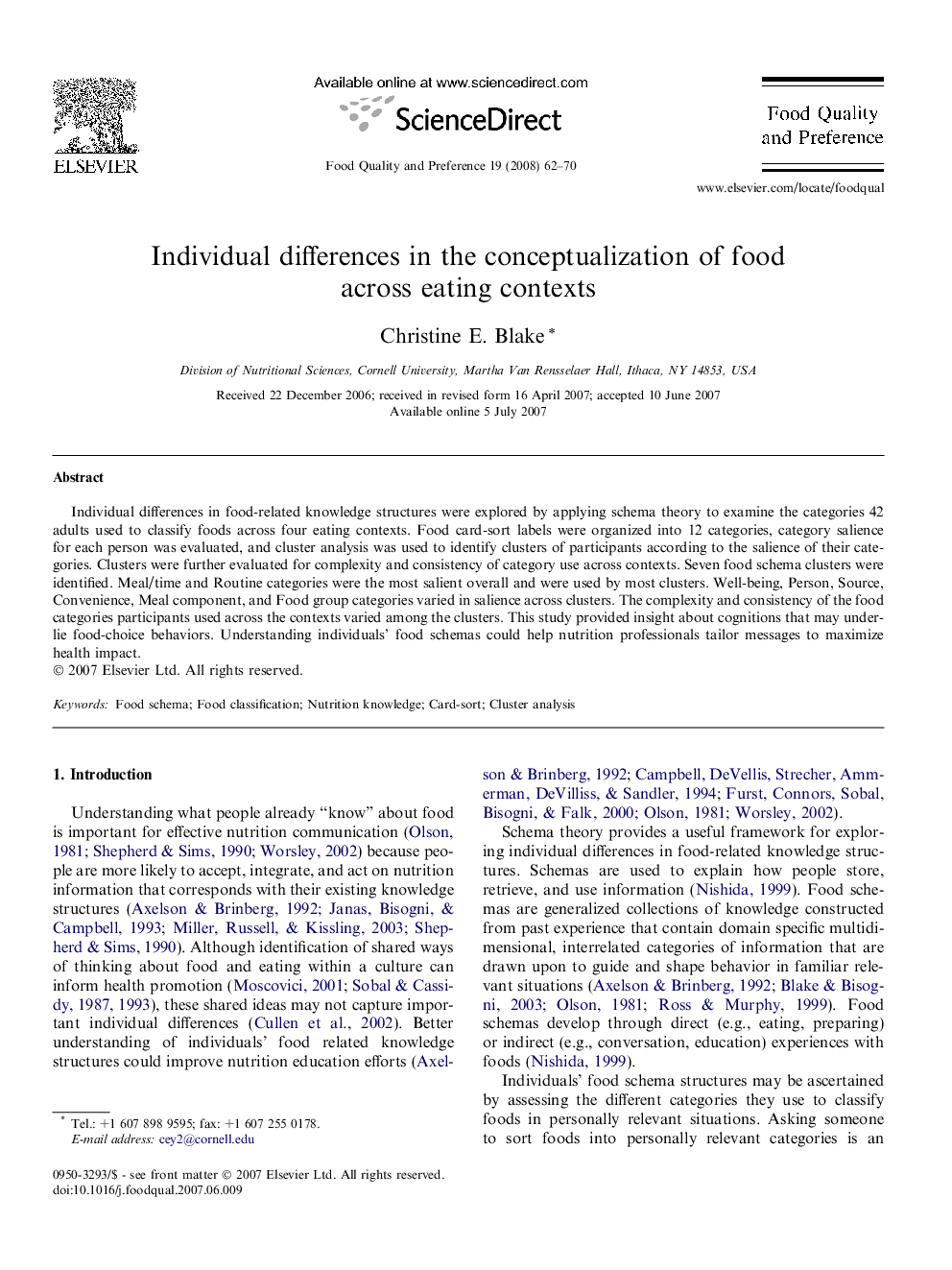| Article ID | Journal | Published Year | Pages | File Type |
|---|---|---|---|---|
| 4318037 | Food Quality and Preference | 2008 | 9 Pages |
Individual differences in food-related knowledge structures were explored by applying schema theory to examine the categories 42 adults used to classify foods across four eating contexts. Food card-sort labels were organized into 12 categories, category salience for each person was evaluated, and cluster analysis was used to identify clusters of participants according to the salience of their categories. Clusters were further evaluated for complexity and consistency of category use across contexts. Seven food schema clusters were identified. Meal/time and Routine categories were the most salient overall and were used by most clusters. Well-being, Person, Source, Convenience, Meal component, and Food group categories varied in salience across clusters. The complexity and consistency of the food categories participants used across the contexts varied among the clusters. This study provided insight about cognitions that may underlie food-choice behaviors. Understanding individuals’ food schemas could help nutrition professionals tailor messages to maximize health impact.
